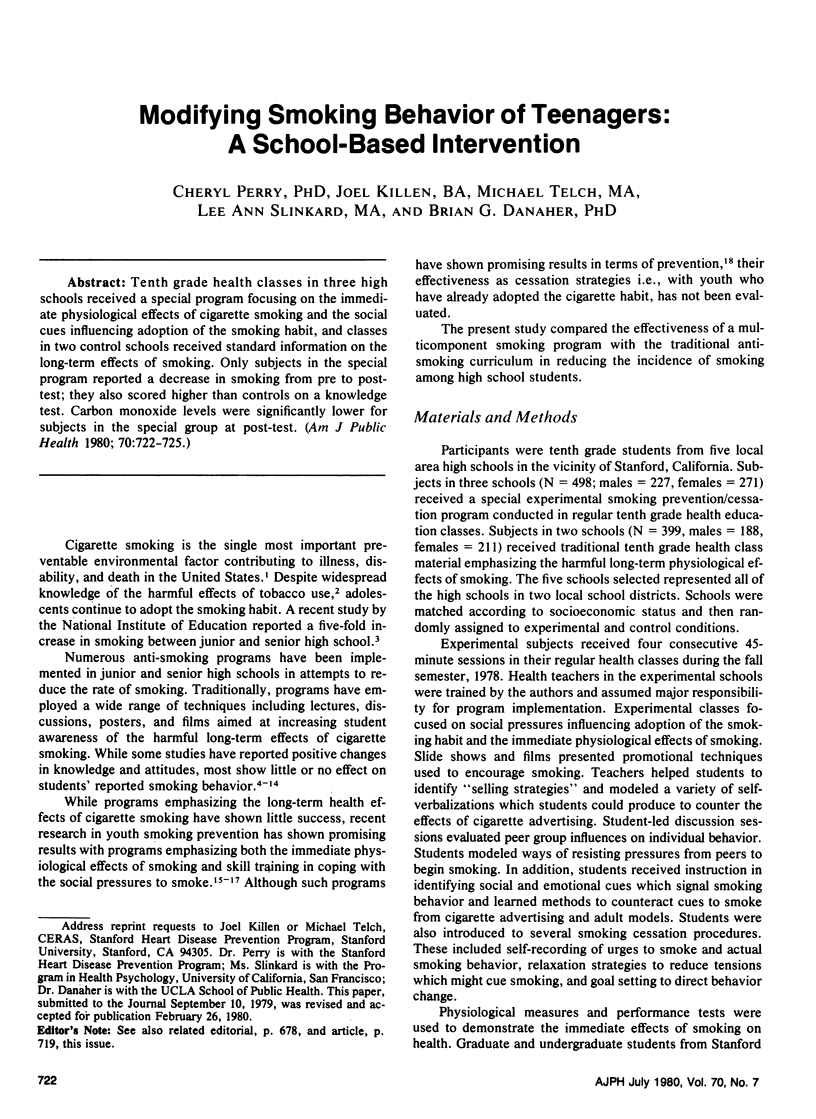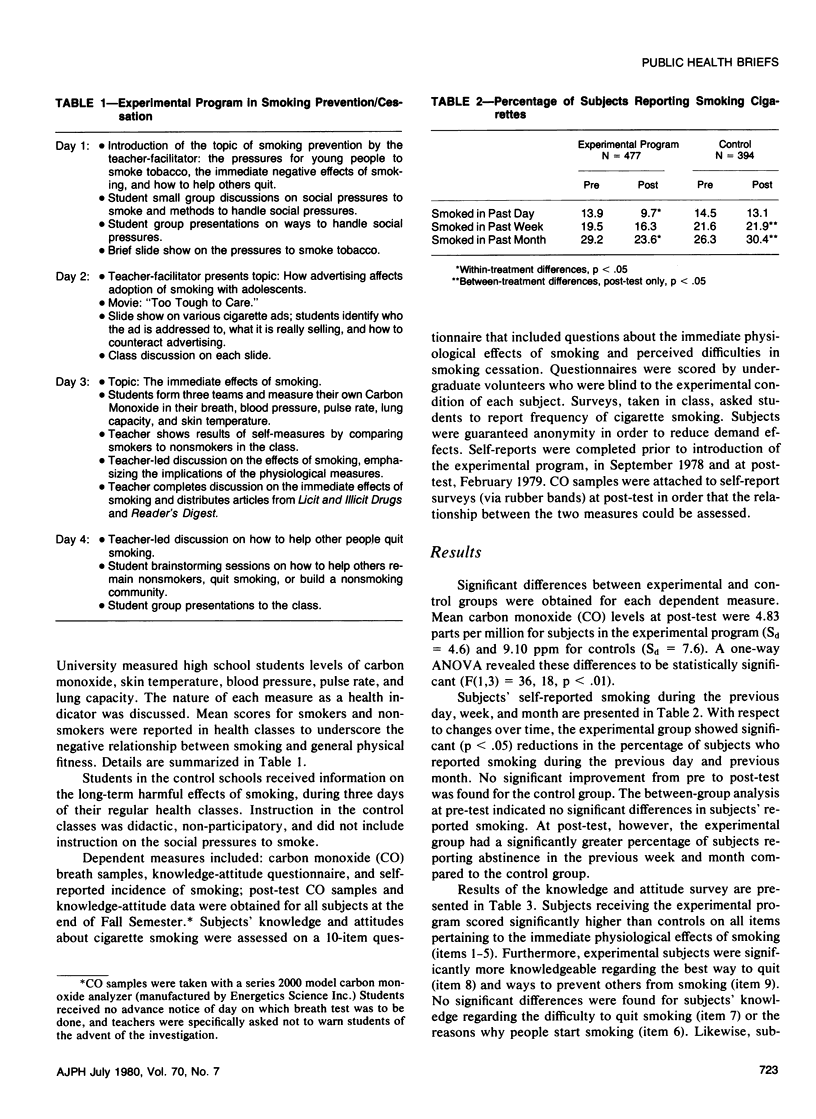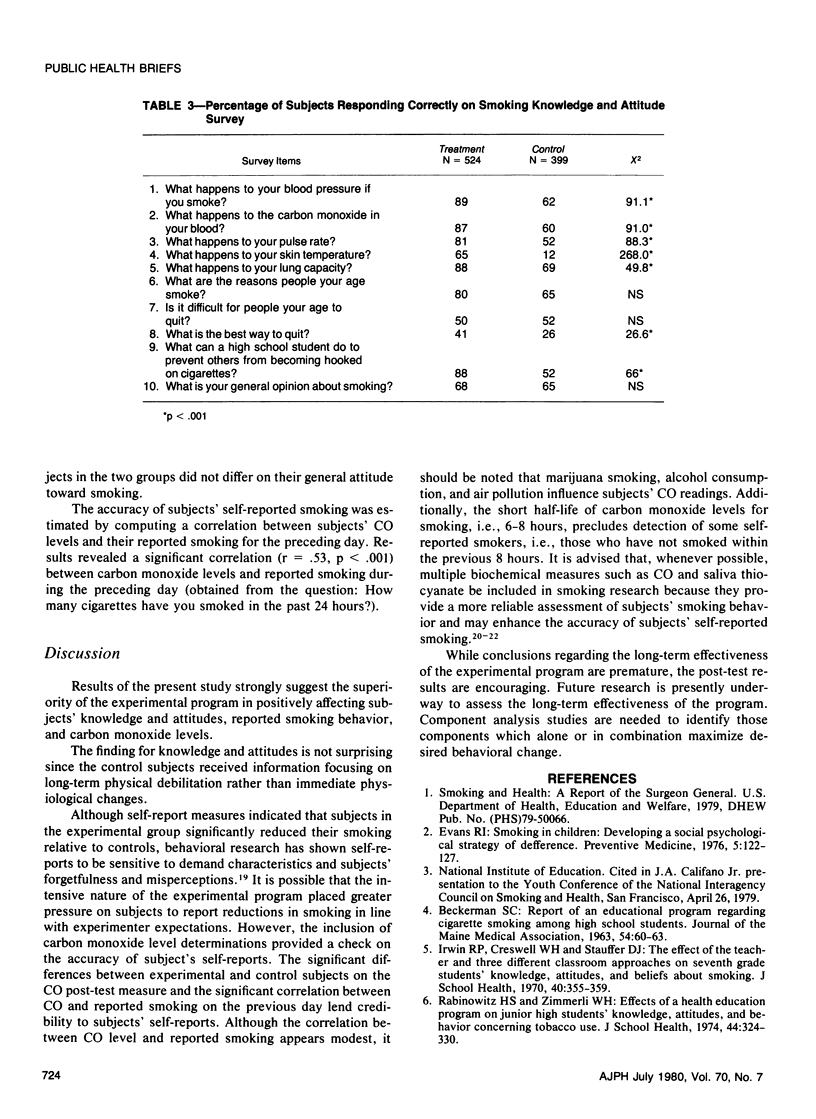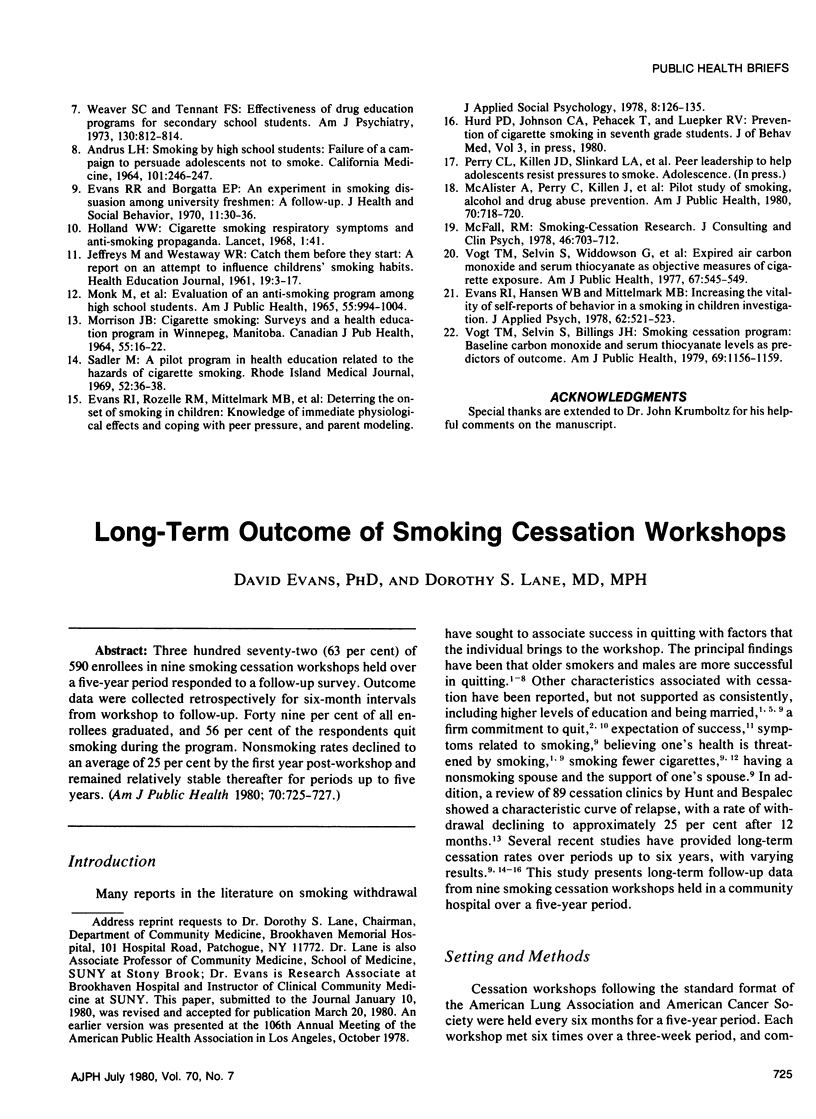Abstract
Tenth grade health classes in three high schools received a special program focusing on the immediate physiological effects of cigarette smoking and the social cues influencing adoption of the smoking habit, and classes in two control schools received standard information on the long-term effects of smoking. Only subjects in the special program reported a decrease in smoking from pre to post-test; they also scored higher than controls on a knowledge test. Carbon monoxide levels were significantly lower for subjects in the special group at post-test.
Full text
PDF



Selected References
These references are in PubMed. This may not be the complete list of references from this article.
- ANDRUS L. H., HYDE D. F., FISCHER E. SMOKING BY HIGH SCHOOL STUDENTS. FAILURE OF A CAMPAIGN TO PERSUADE ADOLESCENTS NOT TO SMOKE. Calif Med. 1964 Oct;101:246–247. [PMC free article] [PubMed] [Google Scholar]
- BECKERMAN S. C. Report of an educational program regarding cigarette smoking among high school students. J Maine Med Assoc. 1963 Mar;54:60–63. [PubMed] [Google Scholar]
- Evans R. I., Hansen W. B., Mittelmark M. B. Increasing the validity of self-reports of smoking behavior in children. J Appl Psychol. 1977 Aug;62(4):521–523. [PubMed] [Google Scholar]
- Evans R. I. Smoking in children: developing a social psychological strategy of deterrence. Prev Med. 1976 Mar;5(1):122–127. doi: 10.1016/0091-7435(76)90015-3. [DOI] [PubMed] [Google Scholar]
- Evans R. R., Borgatta E. F. An experiment in smoking dissuasion among university freshmen: a follow-up. J Health Soc Behav. 1970 Mar;11(1):30–36. [PubMed] [Google Scholar]
- Holland W. W., Elliott A. Cigarette smoking, respiratory symptoms, and anti-smoking propaganda. An experiment. Lancet. 1968 Jan 6;1(7532):41–43. doi: 10.1016/s0140-6736(68)90026-3. [DOI] [PubMed] [Google Scholar]
- Irwin R. P., Creswell W. H., Jr, Stauffer D. J. The effect of the teacher and three different classroom approaches on seventh grade students' knowledge, attitudes and beliefs about smoking. J Sch Health. 1970 Sep;40(7):355–359. doi: 10.1111/j.1746-1561.1970.tb05622.x. [DOI] [PubMed] [Google Scholar]
- MONK M., TAYBACK M., GORDON J. EVALUATION OF AN ANTISMOKING PROGRAM AMONG HIGH SCHOOL STUDENTS. Am J Public Health Nations Health. 1965 Jul;55:994–1004. doi: 10.2105/ajph.55.7.994. [DOI] [PMC free article] [PubMed] [Google Scholar]
- McFall R. M. Smoking-cessation research. J Consult Clin Psychol. 1978 Aug;46(4):703–712. doi: 10.1037//0022-006x.46.4.703. [DOI] [PubMed] [Google Scholar]
- Rabinowitz H. S., Zimmerli W. H. Effects of a health education program on junior high school students' knowledge, attitudes, and behavior concerning tobacco use. J Sch Health. 1974 Jun;44(6):324–330. doi: 10.1111/j.1746-1561.1974.tb07646.x. [DOI] [PubMed] [Google Scholar]
- Sadler M. A pilot program in health education related to the hazards of cigarette smoking. R I Med J. 1969 Jan;52(1):36–38. [PubMed] [Google Scholar]
- Vogt T. M., Selvin S., Billings J. H. Smoking cessation program: baseline carbon monoxide and serum thiocyanate levels as predictors of outcome. Am J Public Health. 1979 Nov;69(11):1156–1159. doi: 10.2105/ajph.69.11.1156. [DOI] [PMC free article] [PubMed] [Google Scholar]
- Vogt T. M., Selvin S., Widdowson G., Hulley S. B. Expired air carbon monoxide and serum thiocyanate as objective measures of cigarette exposure. Am J Public Health. 1977 Jun;67(6):545–549. doi: 10.2105/ajph.67.6.545. [DOI] [PMC free article] [PubMed] [Google Scholar]
- Weaver S. C., Tennant F. S., Jr Effectiveness of drug education programs for secondary school students. Am J Psychiatry. 1973 Jul;130(7):812–814. doi: 10.1176/ajp.130.7.812. [DOI] [PubMed] [Google Scholar]


